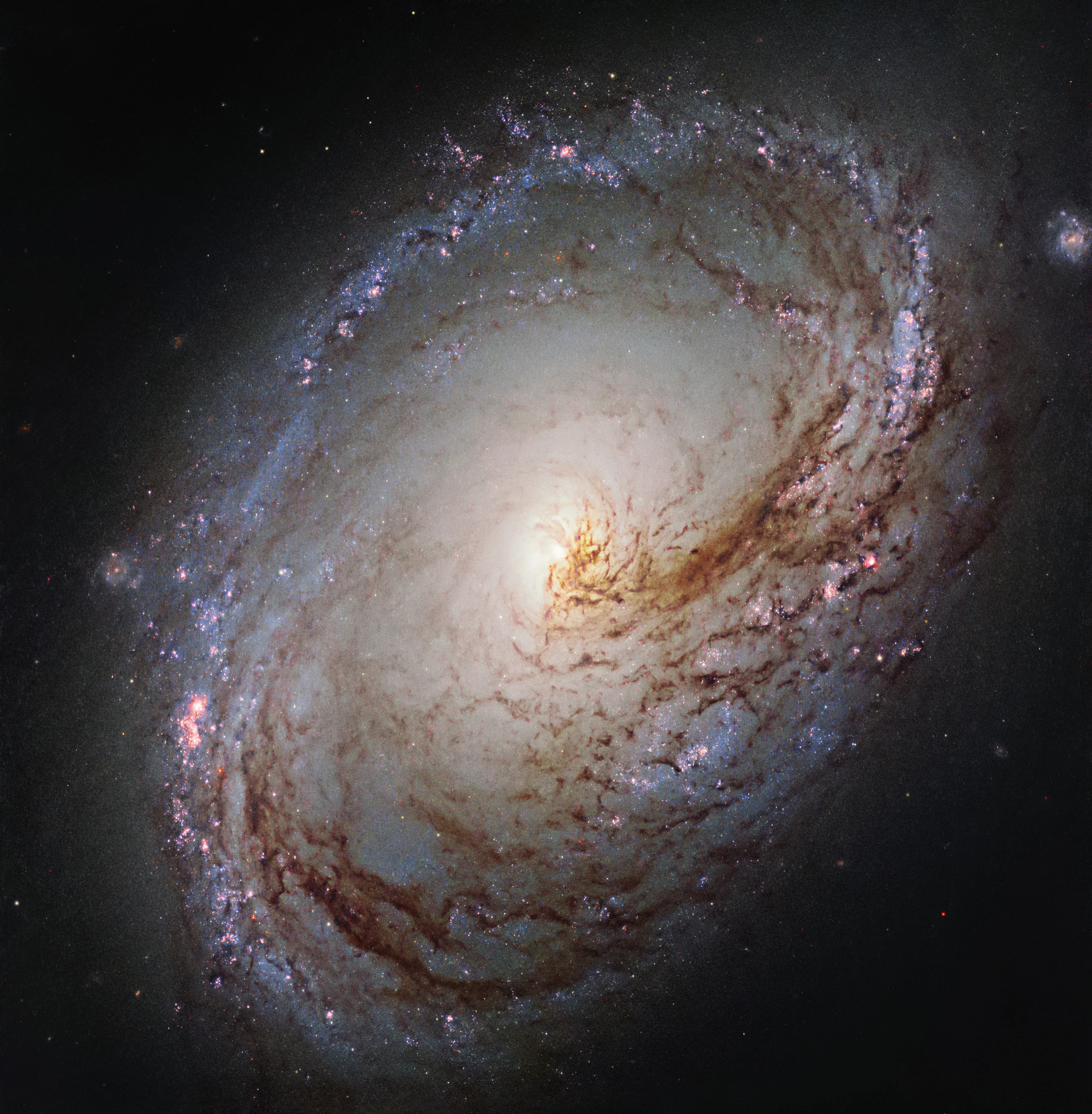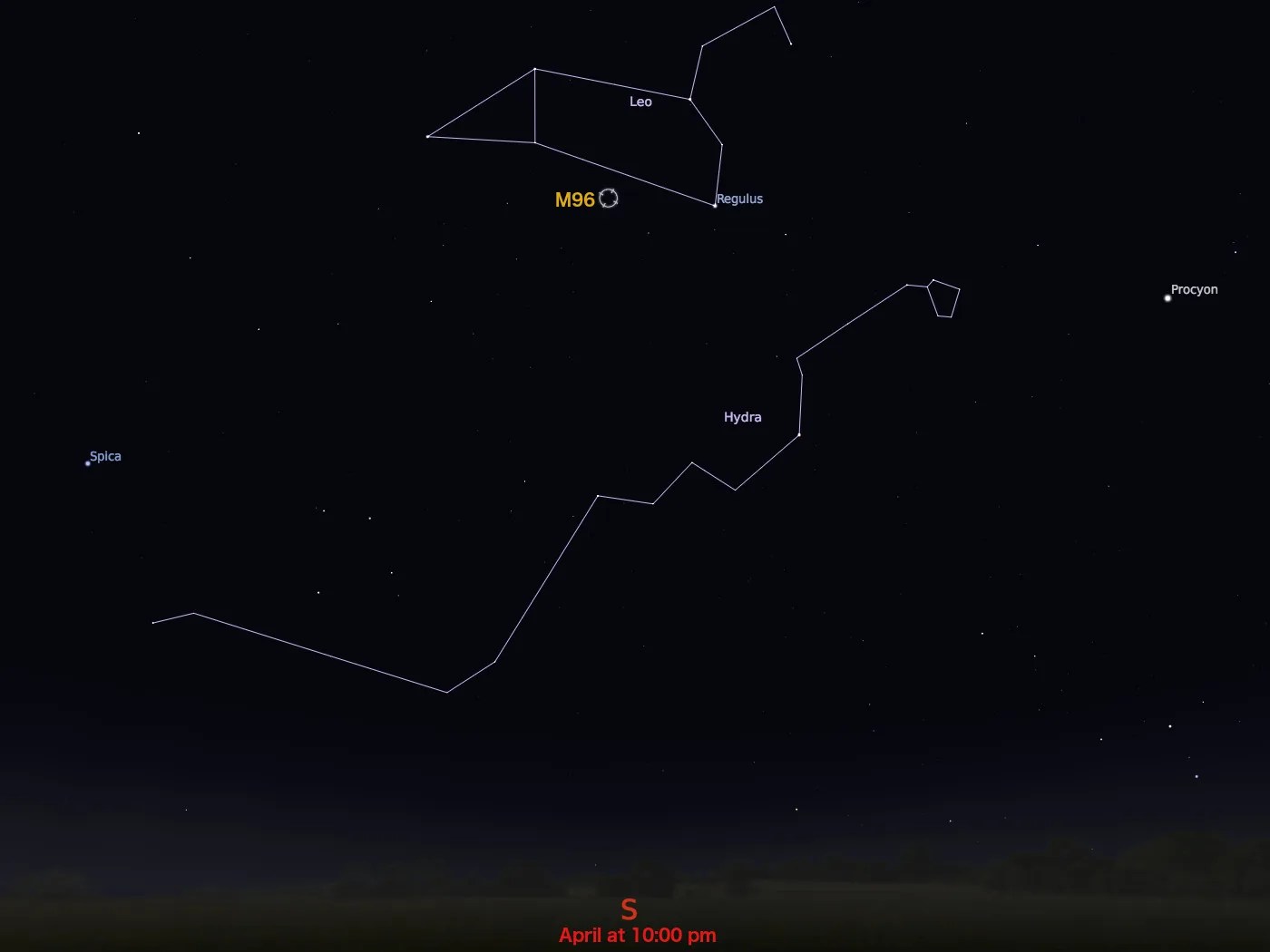Messier 96
This spiral galaxy is asymmetrical because of the gravitational pull of its neighboring galaxies.
Distance
35 million light-years
Apparent Magnitude
10.1
constellation
Leo
object type
Spiral Galaxy

In this infrared and visible-light image from Hubble, the spiral galaxy M96 resembles a giant maelstrom of glowing gas, rippled with dark dust that swirls inward toward the nucleus. Its dust and gas are unevenly spread throughout its weak spiral arms, which are asymmetrical because of its gravitational interaction with neighboring galaxies. M96 is also remarkable for the location of its core, which is not exactly at the galactic center.
Because it is gravitationally bound to nearby galaxies, M96 is considered a member of a galaxy group. This collection of galaxies, known as the M96 Group, also includes the bright galaxies M105 and M95, as well as a number of smaller and fainter members. It is the nearest group to Earth containing both bright spirals and a bright elliptical galaxy.
M96 was discovered in 1781 by Pierre Méchain, the French astronomer and cartographer. It is located 35 million light-years from Earth in the constellation Leo. The galaxy has an apparent magnitude of 10.1 and appears very dim in the sky. It can be observed using a medium-sized telescope most easily during April.
For more information about Hubble’s observation of M96, see:

Explore Hubble's Messier Catalog
The following pages contain some of Hubble’s best images of Messier objects.

Messier 1 (The Crab Nebula)
Better known as the Crab Nebula, Charles Messier originally mistook Messier 1 for Halley’s Comet, which inspired him to create…

Messier 2
Hubble's image of Messier 2 is comprised of visible and infrared wavelengths of light.

Messier 3
Messier 3 holds more than 500,000 stars.




